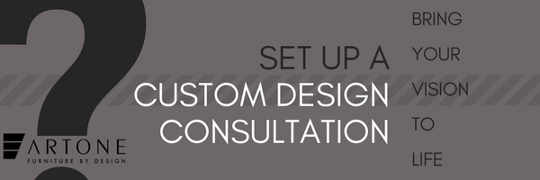
Unless your goal is to spend top dollar, no one starts a hotel project looking to liquidate and exceed its budget.
Even five-star hotel projects have budgets.
As hotel casegoods and millwork are a major component of any hotel guestroom redesign or refresh, they also represent an opportunity to control spending. Cost-effective, yet durable, laminate casegoods provide a variety of ways to get exactly what’s needed from guestroom furnishings without compromise.
Through value engineering, laminate finish furniture is easily designed and manufactured to meet any budget and vision.
Laminate Casegoods & Getting the Most From Your Investment
The laminate of today is a far cry from what it was 30 years ago.
Rather than being a dull, easily damaged material available in a limited selection of colors and patterns, it’s now durable, versatile, and can meet any design scheme.
While investing in laminate casegoods already helps preserve a project’s budget as it costs less than hardwoods or other materials, coupling it with value engineering takes things to the next level.
Value engineering hotel FF&E encompasses all elements and stages of a project. Ultimately, value engineering matches need, performance, and function with a budget. Value engineering any hotel casegood doesn’t just happen – it involves both the client and the manufacturer working closely together to create a final product that meets all expectations.
The #1 thing a hotelier or hospitality project manager can do to bring value engineering to their project is to work with an experienced hotel casegoods manufacturer.
Projects that maximize value engineering for laminate hotel casegoods, keep these elements at the forefront:
-
Communication
-
Budget
-
Material selection
-
Design flexibility
1. Communication
The #1 impediment to any project is a lack of communication. And when working with a hospitality casegoods manufacturer, open lines of communication from the beginning set the stage for a successful working relationship.
During initial conversations about your project, your casegoods manufacturer needs to know:
-
Budget – how much are you able to spend (more on that later)?
-
Purpose – what are the casegoods being used for?
-
Placement – where will the casegoods be located?
-
Design vision – what is the aesthetic you’re trying to achieve?
-
Timeline – how soon are you expecting your order?
-
Any special considerations – all projects are unique. What makes yours different from others?
Communication doesn’t stop once an order is placed – the manufacturer and client should regularly talk and keep each other apprised of progress and any issues that come up.
2. Budget
There’s nothing more frustrating for a project manager to go through the entire intake and design process only to find out the proposed casegoods go well beyond their budget.
Next to communication, a project budget is the most important element of successful value engineering. In fact, it should be among the first things discussed with a manufacturer.
Being upfront with your budget sets financial guide rails for your project and essentially lets your hospitality contract furniture manufacturers know what they’re working with. Furthermore, a manufacturer is better able to align your spending plan with return on investment.
On the other side of the token, it’s important for a client to be reasonable about what things actually cost. Budgets can only go so far, and some materials – laminates included – cost more than what’s expected. In addition, a variety of factors also impact a project’s final bill, such as sourcing, labor, and shipping.
Resource: Find out what a solid hotel casegoods budget accounts for.
3. Material Selection
Laminates used in hotel casegoods fall into two grades: high pressure and low pressure.
High-pressure laminate (HPL) comprises multiple layers of resin-infused kraft paper fused together under intense heat and pressure. A durable material, HPL is often used in applications in high-traffic areas and horizontal surfaces or in items that see heavy use. Low-pressure laminate (LPL) is made of one or two layers of kraft paper and pressed directly onto a substrate, such as particleboard. Requiring fewer materials and less processing, LPL is the less-expensive laminate option.
While it’s tempting to construct a casegood – say, a dresser – out of impact-resistant HPL, value engineering is strategic about material use. As with many other casegoods, a dresser does not need to be made entirely with HPL – unexposed sides or lightly used surfaces are good locations for LPL as they’re at low risk for damage.
By purposefully integrating both laminate types into a casegood, your manufacturer is able to deliver a final product that meets application demands without costing more than necessary.
4. Component Flexibility
Hotel guestroom casegoods are now serving more purposes than ever.
Consider a headboard. What was once a decorative element affixed to a wall is now being upgraded to become a smart, functional furnishing. Modern headboards are seeing upgrades to meet guests' needs. You’ll now find them outfitted with lights, electrical outlets and USB ports, and even speakers. As guestrooms are being sized down, headboards are also providing some additional storage space.
Unless your project has non-negotiable elements, such as using a specific type of component or brand-name material – an experienced hospitality furniture company is usually able to provide lower-cost alternatives that don’t compromise on performance.
The same goes for accents to your casegood – think stone countertops or decorative hardware – chances are your manufacturers can find a variety of alternatives that still fit within your design vision.
Laminate Casegoods: Hotel Furnishings That go the Distance
Laminate hotel casegoods provide almost limitless options to meet a project’s design vision. In addition, advances in technology and processing have made laminates a suitable option for casegoods expected to see heavy use.
When value engineered, laminate casegoods take your investment further without compromise, all while keeping costs within your budget.
Value Engineering is Our Specialty
Set up a free consultation with a member of our team today:

